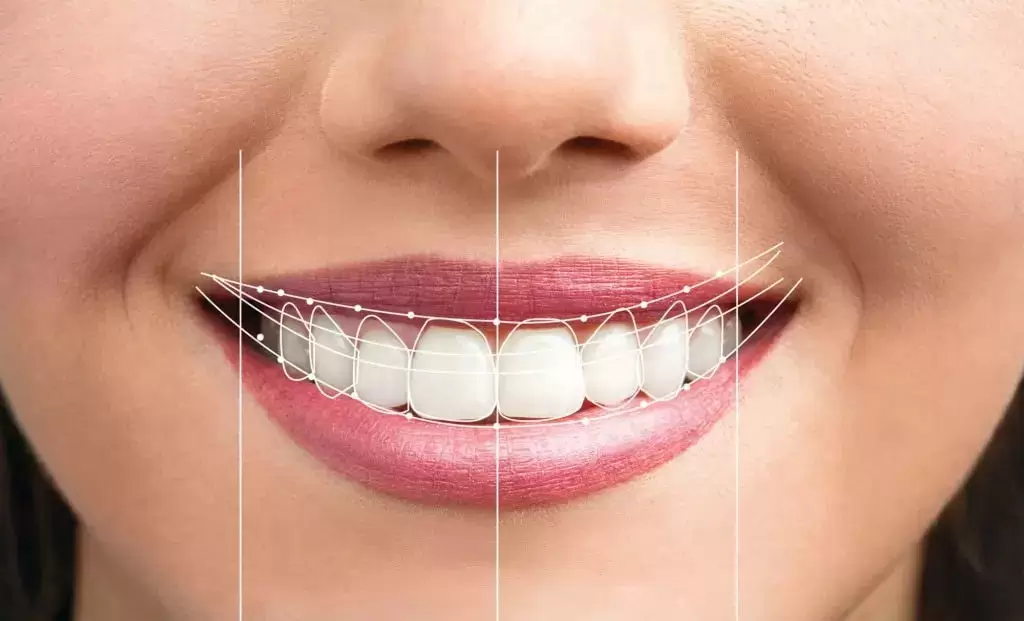
Aesthetics is the branch of science that examines beauty and the nature of fine arts. Aesthetic perception is defined as the reactions a person exhibits towards the external world using terms like ‘beautiful’ and ‘ugly’.
We acknowledge that beauty and attractiveness are relative, varying from person to person, society to society, and even era to era. However, the one unchanging factor is the golden ratio.
Teeth are the most crucial and complementary element of facial aesthetics. When the golden ratio is achieved in teeth, along with other factors and necessary interventions, aesthetic smile design is completed.
In individuals, achieving an aesthetically pleasing smile doesn’t solely rely on having white and straight teeth. The gums surrounding these teeth also need to be in harmony. Aesthetic work done on the gums is referred to as “pink aesthetics” or gingivoplasty. Among the elements that complement dental aesthetics, the health, color, and alignment of the gums are considered.
The first step to obtaining an appealing, clean, and harmonious smile when viewed from the front involves achieving the necessary balance between teeth and gums. To consider gums as healthy, they should have a light pink color, firmly attach to the teeth and bone, and present a matte and slightly stippled appearance resembling an orange peel. In the realm of aesthetic dentistry, the goal is to achieve a flawless smile. Gum aesthetics play a significant role in achieving a smile that can be described as flawless. To create a smile that is pleasant, teeth, gums, jaws, and lips must all harmonize. Depending on the presence of gum-related issues, different surgical methods can be used in gum aesthetics. During the process of shaping a smile, excessive gum exposure might require adjustment, while in some cases, reducing the size of certain gum areas might be necessary (referred to as a “gummy smile”).
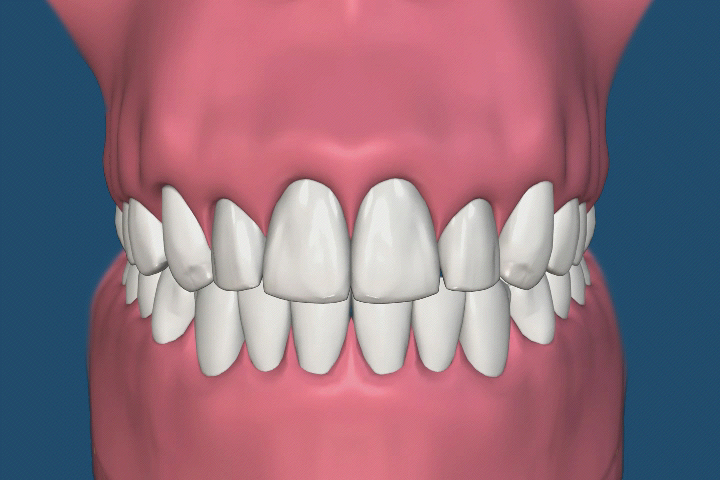

Teeth whitening can be applied to individuals with naturally dark or darkened teeth due to various reasons. For the treatment to be viable, the patient should not have gum issues (gum inflammation, gum recession), and there should be no wear in the neck region of the teeth. Therefore, patients considering teeth whitening undergo a thorough examination first, and necessary treatments are carried out before proceeding with the whitening process.
1- Home (at-home) type: A custom-made tray is prepared for the mouth based on impressions taken from the patient. The patient is provided with a special gel by the dentist, which is applied at specific intervals.
2- Office (in-office) type: This is performed in a clinical setting. After isolating the gums, a special gel is applied to the teeth, and it is activated using a light device.
Laminate veneer treatment, commonly known as “yaprak porselen” (leaf porcelain) in colloquial language, holds a significant place among aesthetic dentistry procedures. It allows for achieving superior aesthetic results with minimal intervention in teeth. Only the front surface of the teeth is prepared. Laminate veneers, which are nearly as thin as a contact lens, are bonded to the tooth through bonding agents. They help your teeth attain the desired color and shape. Since they are polished in porcelain furnaces at temperatures around 900 degrees Celsius, they resist staining and food retention. To extend their lifespan, it’s important to avoid biting on very hard foods and refraining from habits like nail biting.
Zirconium teeth are preferred by both dentists and patients due to their aesthetic appearance and durability. Zirconium is a substructure material used to support porcelain.
Metal-supported crowns, which have been used for a long time, are now insufficient to meet aesthetic expectations in our era. Their opaque appearance due to their inability to transmit light falls short of providing the vibrant appearance of natural teeth. Other disadvantages include the development of a dark shadow in areas close to the gum line. These shortcomings have led to the need for the use of metal-free porcelain and zirconium materials in aesthetic dentistry applications. Zirconium is not allergenic and does not interact with oral fluids. Zirconium coating does not conduct heat or cold, eliminating sensitivity due to thermal conductivity.
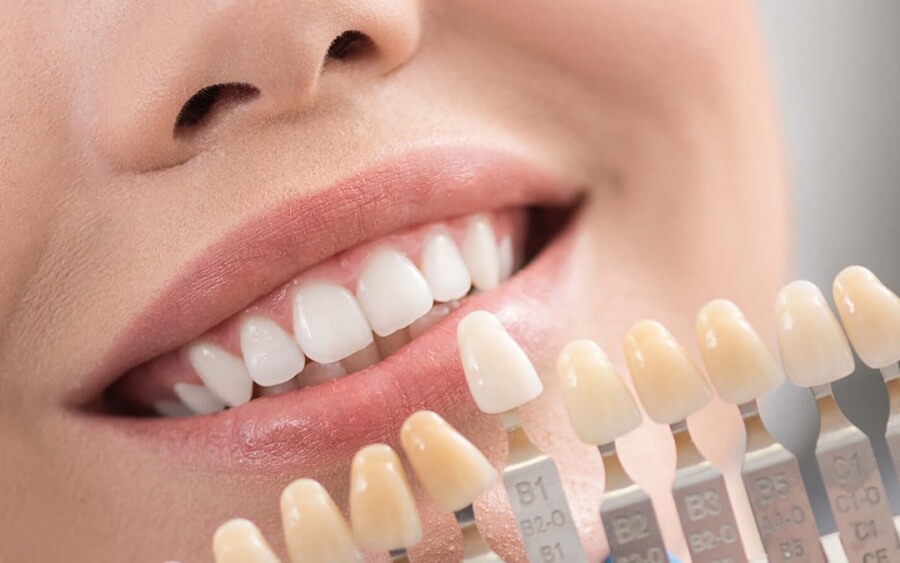
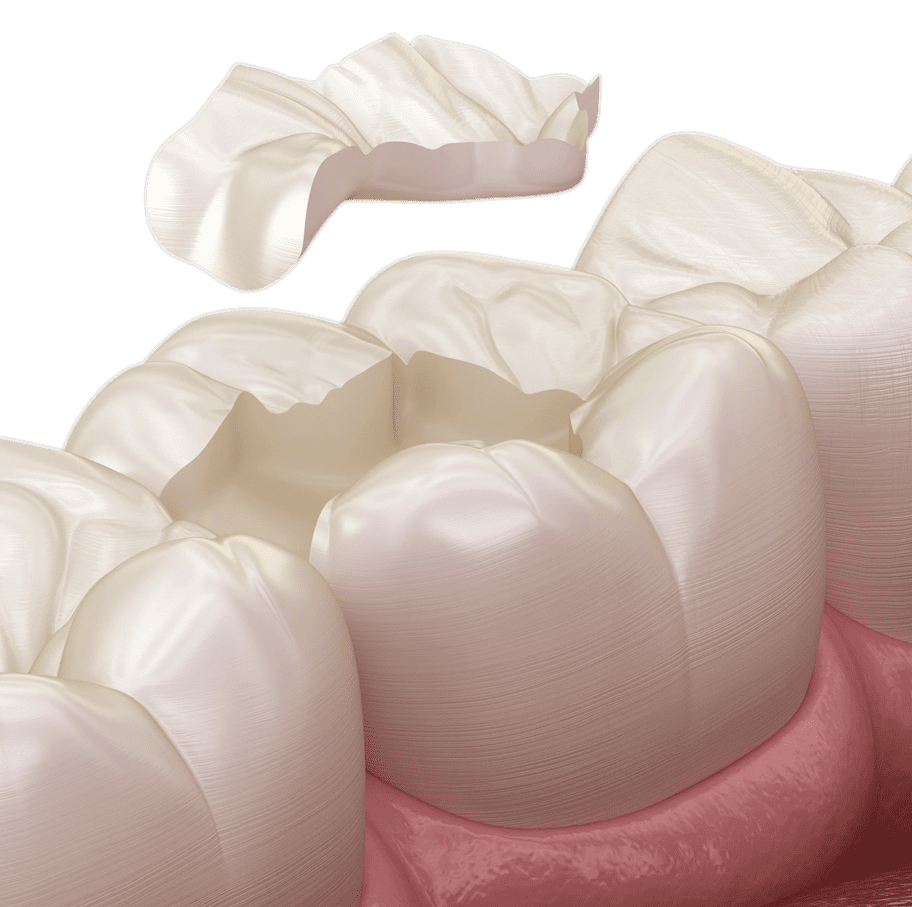
Ceramic fillings, also known as inlays-onlays, are a type of restoration used to repair tooth structure loss caused by factors such as decay, root canal treatment, or trauma. They are designed to restore only the missing portions of the tooth, either with a type of segmented porcelain or simply put, a filling made of reinforced composite or porcelain material that is fabricated in a laboratory. Compared to composite fillings, these types of fillings exhibit better compatibility with the adjacent teeth.
Ceramic inlays and onlays, much like laminate veneers, preserve the intact natural structure of the tooth. These types of fillings are preferred in the posterior teeth for patients who have aesthetic and comfort expectations, instead of using metallic and dark-colored amalgam fillings.
In cases where a significant number of fillings are required, the preparation and impression-taking steps can be completed in a single session. The ceramic fillings, prepared in the laboratory, are then placed during a second session, saving a considerable amount of time. Since these types of fillings are prepared outside the mouth, they provide an excellent fit with the teeth due to their laboratory fabrication, unlike traditional fillings.
The lifespan of ceramic fillings is generally longer compared to composite fillings. Since porcelain fillings have a hardness level similar to that of natural teeth, they prevent fractures caused by biting forces and contribute to the overall health of the tooth. Additionally, due to their preparation to match the tooth color, ceramic fillings appear natural and are nearly indistinguishable to the naked eye.
These fillings, with their naturally seamless appearance, have enhanced polishing techniques that prevent discoloration caused by substances like cigarettes or other staining agents over time. Individuals can move comfortably with the feeling of having no fillings at all, maintaining healthy and aesthetically pleasing teeth for many years.
Bonding is a procedure that is completely non-destructive to the teeth and is performed to address minor dental issues.
The goal of bonding is to enhance the appearance of the teeth and contribute to smile aesthetics.
Sometimes, teeth may be overly large or small, and their color might not be as desired. In such cases, bonding can be used to make small additions to the teeth and give them a new look.
Bonding is easily applicable for closing unwanted gaps between teeth and making shape and color changes to teeth. It is a method used to close gaps between two or more teeth. It is also preferred in cases where young individuals experience accidents or falls that result in tooth damage and where porcelain application is not possible. Bonding can even be successfully applied when half of a tooth is fractured.
If there is no underlying issue (such as decay) with the teeth, anesthesia is not necessary for the procedure. During the process, there is no pain or discomfort felt. No tooth reduction is needed prior to the procedure.
This procedure, which enhances a person’s smile and addresses minor dental issues, is often completed in a single session. The duration of a single session varies between 15 minutes and 1 hour depending on the extent of the cosmetic work involved. However, the number of sessions required can vary from person to person and depending on the specific procedure to be performed.
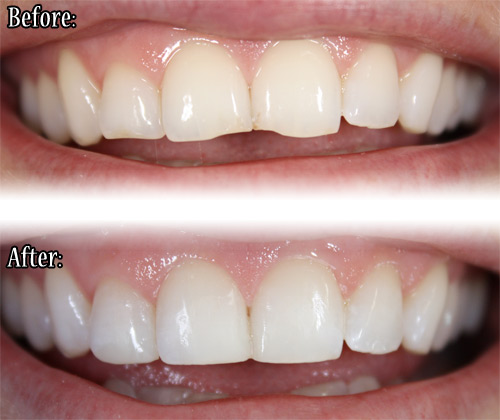

When coming to your first appointment, bringing previously taken X-rays and documents related to
past treatments will provide us with detailed information about your treatment history.
The requested date and time, depending on our doctors’ availability, may vary.
Please wait for us to reach out to you for confirmation.

Özer Dental Clinic, located on Alaiye Street, one of the bustling areas of Alanya, provides dental health services with its team of expert dentists.
Dr. Özer | Hacet Neighborhood, Alaiye Street, B.Uyaroğlu Apartment, Unit: 60/A, 07400 Alanya, Antalya
ÖzerDiş ® owns the Klinik32 brand, copying this content without permission is prohibited. | Copyright © 2018 www.ozerdis.com